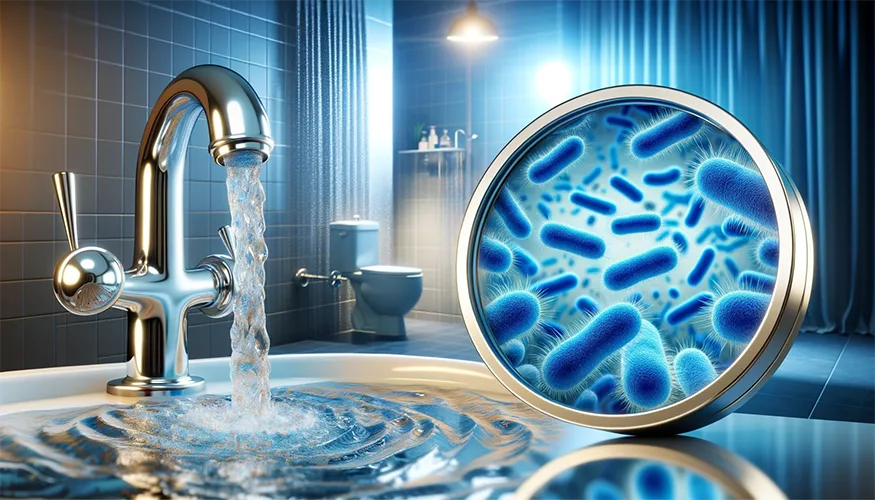The 1991 Safe Drinking Water Act significantly reduced plumbing fixture flow rates. This was done to lessen the nation’s domestic water usage via plumbing fixtures, reducing the energy required to treat surface and groundwater to potable water standards. The changes also reduced the energy required to treat sewage to tertiary standards. In the decades since, water scarcity has caused states to mandate further reductions in plumbing fixture flow rates.
As the architecture, engineering, and construction (AEC) industry strives toward more sustainable practices in the face of climate change, AEC firms are also adopting independent water-saving measures. For example, to meet Henderson Engineers’ pledge to decarbonize by 2040, flow rates for fixtures in Figure 1 are used for all projects. Clients are happy with the water saved, reducing their sewer, water and water heating bills. The fixture flow rates also help clients meet their own decarbonization goals.
It is crucial to note that it has been proven that Hunter’s Curve provides flow rates for a given fixture unit load that is in excess of three times the flow rate found in the field. As plumbing fixture flow rates are further reduced, actual flow rates will diverge lower than Hunter’s Curve predicted values.

Studies have shown that little to no flow in a pipe can increase the amount of biofilm. Legionella pneumophilia can grow in these biofilms. Also, the bacteria can be introduced into a lavatory or sink faucet where cold water enters a point-of-use thermostatic mixing valve, allowing it to grow in the piping downstream of the faucet and in the flow controller. Another location for Legionella pneumophilia growth is in showerheads.
Thus, low-flow plumbing fixtures are proven to be a source of Legionnaires’ Disease, which can be fatal to people with deficient immunity systems.
What is Legionella?
Legionella is the waterborne bacterial pathogen that was first identified when it caused the outbreak of Legionnaires’ Disease in Philadelphia in 1976. It is a bacterium that includes the species L. pneumophilia, which causes legionellosis (Legionnaires’ Disease), a pneumonia-type illness.
Currently, there are at least 16 serogroups of Legionella pneumophila and 70 serogroups of Legionella in total, of which Legionella pneumophilia serogroup 1 is the most virulent and the No. 1 cause for the majority of Legionnaires’ Disease.
Legionella transfers into the body when someone breathes in small water droplets or accidentally swallows water containing the bacteria into the lungs.
Detecting Legionella
Several steps can be taken to accurately detect Legionella bacteria in a plumbing system, primarily by collecting water samples at various locations throughout. When the samples are collected, certain steps ensure the samples collected do not become contaminated.
For example, samples should always be collected in a sterile plastic sample bottle provided by the testing laboratory that will be performing testing (Figure 2). Do not flush the faucet/shower on the plumbing fixture prior to collecting the samples, as collecting the sample after the faucet has been flushed can significantly reduce the recovery of Legionella bacteria if present in the water system.
Primary areas where testing samples should be taken from include multiple risers, showers and faucets, hot water tanks, hot water recirculation lines and drinking fountains. Once the samples have been collected, they should be sent to a laboratory accredited for Legionella testing by either A2LA or the National Environmental Laboratory Accreditation Program.
The Special Pathogens Laboratory in Pittsburgh, Pa., is the leader in testing and reporting on Legionella disease and one of the leading Legionella testing laboratories in the nation.

Standards and Guidelines
Many studies and research have been done over the years on how to mitigate Legionella in domestic water and cooling systems. One of the resulting standards is ANSI/ASHRAE 188, Legionellosis: Risk Management for Building Water Systems, the first and only standard in the United States.
It describes building types and water plumbing fixtures and equipment included in a water safety and management plan, as well as steps to maintain a water safety and management plan. Also included are guidelines on who should be part of the water safety and management team for managing building water systems to minimize the potential for Legionella growth.
Additionally, the Centers for Disease Control and Prevention (CDC) developed a toolkit for building operators to interpret and implement ASHRAE 188. The CDC toolkit, available at www.cdc.gov, gives building owners guidelines on physical controls, temperature management, disinfection levels and visual inspections.
Mitigation Methods
Many methods exist for mitigating Legionella in new and existing buildings, most of which are outlined on the CDC’s website under design recommendations and in the ASHRAE 188 standard. For the purposes of this article, we will not be going through each of the methods or design recommendations in detail.
However, the following is a short list of factors that are recommended and should be followed:
• Hyperchlorination. This method effectively kills the bacteria but has several major negative aspects. First, high chlorine concentrations are required to kill the bacteria. Second, chlorine byproducts are total trihalomethanes (TTHMs), potential carcinogens. Third, chlorine is corrosive and can cause degradation, leading to potential failure of the piping. It, therefore, is not recommended for regular use in most hospital facilities.
• Copper-silver ionization. This method is an electrolysis process introducing positively charged copper and silver ions into the water supply as current is applied across copper and silver electrodes. The positive ions bind to the negative cell walls of bacteria, which causes the proteins in the cell wall to break down, effectively killing the cell.
• Chlorine dioxide. This is effective in the control of Legionella bacteria in domestic hot water systems. It penetrates biofilm and slime and kills bacteria at its growth sites. Chlorine dioxide can be explosive and requires that it be administered by personnel licensed by the state.
• Ozone. Using ozone effectively kills the bacteria in the immediate vicinity of the ozone generator. Its advantage is that TTHMs are not produced. Its disadvantages are that ozone concentrations quickly dissipate in the system to below concentrations required to kill bacteria; it can cause corrosion problems in old piping; it is ineffective in large systems; and it does not eliminate the growth of existing colonies in other portions of the system. This is also an expensive option.
• Ultraviolet light. UV radiation effectively kills the bacteria as it flows through a single point in the system. It is effective only for small, localized systems and short pipe runs. It is ineffective in large systems and does not eliminate the growth of existing colonies in other portions of the system. The effect of UV on Legionella within protozoan vesicles (protozoan bodies loaded with Legionella cells) is also unknown.
Design Considerations for Legionella Mitigation
One of the most common design considerations for Legionella mitigation is to provide a water heating system with an operating temperature of 140 F supply throughout the building and recirculating back to the water heating system at a minimum of 132 F, whereas some publications recommend recirculating back at 125 F.
In addition to supplying 140 F supply temperature throughout the entire building, limit dead legs to the connection at the fixture to be as short as possible from the circulated hot water system. In cases where public laboratories are being designed, Henderson Engineers’ policy is to provide a point-of-use thermostatic mixing valve directly underneath the laboratory to reduce the risk of scalding the user.
Henderson Engineers has designed systems with water heaters set at 160 F and digital mixing valves set at 140 F. Any Legionella entering the water heater from the cold or hot water return system is killed in a few minutes.
Digital mixing valves off the building offer the advantage of data acquisition. Operating entering hot water and hot water return temperatures are recorded and serve to document the building operator’s Legionella risk management plan. The downside to this type of system is that operating a water heater at 160 F will reduce its lifespan.
Other than designing a 140 F hot water supply system, water treatment is one of the other common methods for mitigating Legionella. Due to the risk involved in ongoing maintenance of chlorine injection, rooms must be designed specifically to hold these types of chemicals and emergency shower/eye wash and independent exhaust systems must be provided and considered.
Henderson Engineers’ preferred method for Legionella mitigation is a copper-silver ionization system. The systems are skid-mounted package systems and delivered on-site with lower yearly operational costs than chlorine or chlorine dioxide injection.
Other methods worth considering include flushing, thermal disinfection, ultrafiltration, UV light on hot water return (HWR), and ultrafiltration of HWR.
Discuss the risk associated with Legionella in water systems with the building operations team at the start of each project, especially when incorporating low-flow plumbing fixtures. Provide recommendations for mitigating Legionella and determine the methods for the system design.
Designers/engineers should read through ASHRAE 188 and CDC guidelines to better serve their clients and protect the public from contracting Legionella pneumophilia. Selecting a good method for mitigating Legionella is as important as practicing sustainable design approaches.





